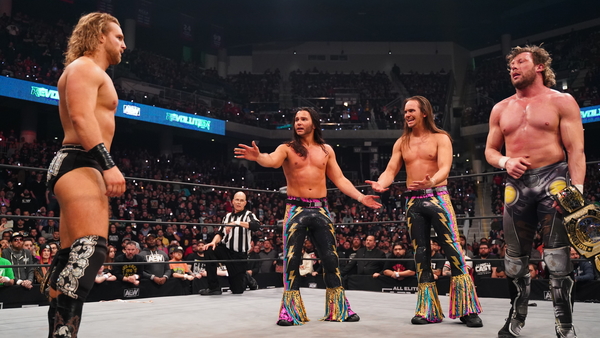How AEW Built The Perfect Tag Team Division

That Page can't see how well they complement one another is the bittersweet beat of the story, but his position is understandable. He was living in the shadow of his friends for so long that it feels to him like the Elite can't stand to let him celebrate under the lights.
At Revolution, AEW told a pathos-laced story of frayed friendship, encouraging the audience to sympathise with every member of both teams almost entirely through the medium of seminal wrestling. It was a masterpiece that, in the end, through incredible details-focused wrestling, positioned Page as the true hero. He went for the One-Winged Angel; Kenny Omega, in his match with PAC just days earlier, never went for the Buckshot lariat. When his own arsenal had failed him, he drew on Kota Ibushi's Kamigoye.
With the arrival of FTR, AEW's tag team division has perfected visual storytelling; it's not so much that there's no "time" for promos; there is simply no need. Why pummel viewers with exposition when wrestling, at its core, is a physical storytelling medium? AEW's tag team division rewards those who pay the strictest attention. The development : economy ratio is stunningly deft. Consider last night's all-round incredible Dynamite main event which, from entrances to the match itself to the post-match angle, was sensational.
Page and Omega defeated Best Friends in a very well built and thus close-to-call match with a fabulous finishing stretch that hinted at how close Page is to losing everything, provided he takes Omega for granted. FTR arrived to toast the retaining Champions. They handed them each a beer knowing damn well what they were doing. Omega drinks milk. They know he drinks milk. Omega knows that they know he drinks milk. Omega feigned to drink, and in a very obvious move, poured the beer over the ring. FTR played dumb. Hangman was probably just happy somebody gave him a bottle.
CONT'D...(4 of 6)